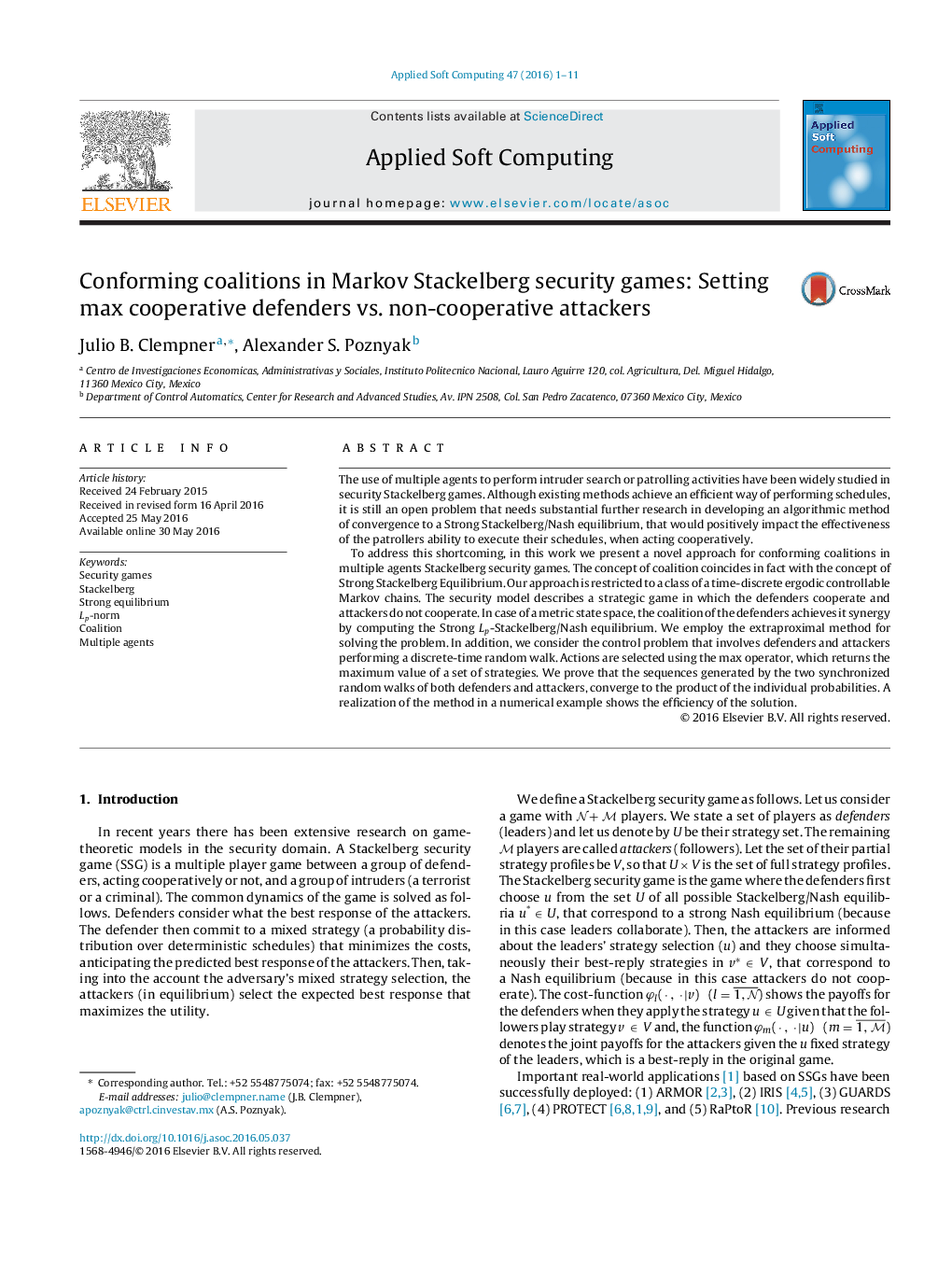| کد مقاله | کد نشریه | سال انتشار | مقاله انگلیسی | نسخه تمام متن |
|---|---|---|---|---|
| 494601 | 862801 | 2016 | 11 صفحه PDF | دانلود رایگان |

• A real security game is represented for cooperative Stackelberg games.
• The game describes a group of defenders that cooperate and a group attackers that do not.
• The coalition is reached by computing the Strong Lp-Stackelberg/Nash equilibrium.
• The extraproximal method is employed for converging to an equilibrium point.
• A game-theoretic formulation method is provided to generate randomized patrol schedules.
The use of multiple agents to perform intruder search or patrolling activities have been widely studied in security Stackelberg games. Although existing methods achieve an efficient way of performing schedules, it is still an open problem that needs substantial further research in developing an algorithmic method of convergence to a Strong Stackelberg/Nash equilibrium, that would positively impact the effectiveness of the patrollers ability to execute their schedules, when acting cooperatively.To address this shortcoming, in this work we present a novel approach for conforming coalitions in multiple agents Stackelberg security games. The concept of coalition coincides in fact with the concept of Strong Stackelberg Equilibrium. Our approach is restricted to a class of a time-discrete ergodic controllable Markov chains. The security model describes a strategic game in which the defenders cooperate and attackers do not cooperate. In case of a metric state space, the coalition of the defenders achieves it synergy by computing the Strong Lp-Stackelberg/Nash equilibrium. We employ the extraproximal method for solving the problem. In addition, we consider the control problem that involves defenders and attackers performing a discrete-time random walk. Actions are selected using the max operator, which returns the maximum value of a set of strategies. We prove that the sequences generated by the two synchronized random walks of both defenders and attackers, converge to the product of the individual probabilities. A realization of the method in a numerical example shows the efficiency of the solution.
Figure optionsDownload as PowerPoint slide
Journal: Applied Soft Computing - Volume 47, October 2016, Pages 1–11